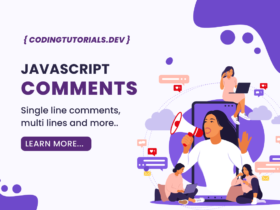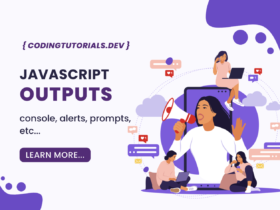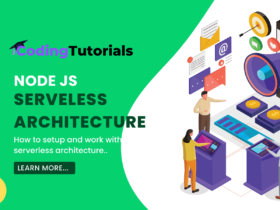Welcome to our comprehensive guide on mastering Node Js event loop and emitter. These two concepts are fundamental to Node Js development and are crucial for building efficient and scalable applications. In this guide, we will dive deep into understanding the event loop and emitter mechanism in Node Js.
Before we delve into the details, let’s first understand what Node Js is. Node.js is a runtime environment built on the V8 JavaScript engine that allows developers to build server-side applications using JavaScript. Its non-blocking, event-driven architecture enables high-performance and scalable applications.
In this guide, we will cover everything you need to know about working with the Node Js event loop and emitter, including how they work, best practices, and real-world examples of building applications using these concepts. By the end of this guide, you’ll be equipped with the knowledge and skills to write efficient and performant Node Js applications.
Key Takeaways
- Node Js event loop and emitter are fundamental concepts for building efficient and scalable Node Js applications.
- The event loop is responsible for managing asynchronous operations and callbacks.
- The EventEmitter module enables objects to emit and listen for events, enabling communication and coordination between different parts of the application.
- Following best practices when working with the event loop is essential for writing efficient and non-blocking code.
- Real-world examples of building applications using event loop and emitter reinforce knowledge and demonstrate practical application.
What is Node Js?
Before diving into the event loop and emitter, let’s start by understanding what Node Js is. Node Js is a runtime environment built on the V8 JavaScript engine that allows developers to build server-side applications using JavaScript. It provides a non-blocking, event-driven architecture that enables high-performance and scalable applications.
Node Js was created by Ryan Dahl in 2009 and has since gained popularity among developers due to its simplicity, flexibility, and speed. It has become an essential tool for building real-time web applications, data streaming applications, and scalable network servers.
Introduction to Event-Driven Programming
Event-driven programming is a paradigm that departs from sequential execution. In traditional programming, each instruction is executed in order, one at a time, without taking into account what happens outside the program.
In event-driven programming, the program execution is determined by events happening outside the program. Programs follow a non-linear execution, where events are detected, and a specific function is called to handle the event.
In Node Js, this programming paradigm allows developers to take full advantage of its non-blocking, event-driven architecture. The event loop and emitter mechanism play a crucial role in enabling Node Js to handle a large number of requests simultaneously.
How Event-Driven Programming Works in Node Js
In Node Js, the event-driven model works as follows:
- Node Js constantly monitors all input/output (I/O) operations for events, such as a request being sent or data being received.
- When an event occurs, Node Js adds it to the event queue.
- The event loop checks the event queue for any pending events.
- If an event is found, the associated callback function is executed.
- The event loop moves on to the next event in the queue and repeats the process until the queue is empty.
By relying on events to drive program execution, Node Js can handle multiple requests without waiting for the completion of previous ones, making it an ideal choice for building scalable and responsive applications.
Understanding event-driven programming is essential for effectively utilizing the event loop and emitter in Node Js applications. The next section will dive deeper into the workings of the Node Js event loop.
Understanding the Node Js Event Loop
The Node Js event loop is a critical component of the runtime environment and is responsible for handling all asynchronous I/O operations.
At a high level, the event loop is a continuously executing loop that waits for events to occur and then triggers the associated callbacks to handle those events. The event loop has four distinct phases:
- Timers – This phase executes callbacks scheduled by setTimeout() and setInterval() methods.
- Pending Callbacks – This phase executes I/O related callbacks that were deferred to the next loop iteration.
- Idle, Prepare – This phase is used internally and prepares the event loop for the next iteration.
- Poll – This phase executes I/O-related callbacks that have been queued during the previous iteration of the event loop.
The event loop continuously cycles through these phases, waiting for new events to occur, until there are no more events to process. When the event queue is empty, the Node Js event loop waits for new events to be triggered.
Event Queue
The event queue is a critical component of the Node Js event loop. The event loop uses the event queue to store and manage events that have been triggered by various parts of an application.
When an event is triggered, it is added to the event queue, where it waits to be processed by the event loop. Each event in the queue has an associated callback function, which is executed when the event is processed by the event loop.
It’s important to note that the event loop processes events in a first-in, first-out (FIFO) order. This means that events are processed in the order in which they were added to the event queue.
How the Event Loop works
When the event loop starts, it enters the poll phase. Here it waits for events to occur, such as incoming network connections or I/O requests. If no events are detected, the event loop will wait and periodically check for events until one occurs.
When an event occurs, the associated callback function is added to the event queue. The event loop then enters the poll phase, where it dequeues and processes each event callback in the order in which it was added to the event queue.
After all of the callbacks in the event queue have been processed, the event loop returns to the beginning of the loop and checks to see if there are any new events to process. This cycle repeats continuously, allowing the event loop to handle incoming events and process them efficiently.
Conclusion
The Node Js event loop is a fundamental concept that underlies the entire Node Js runtime environment. Understanding how the event loop works and how to use it effectively is essential for building efficient, high-performance applications.
Working with the EventEmitter Module
The EventEmitter module is a key component of Node Js that provides an event-driven architecture for building applications. It allows objects to emit and listen for events, enabling communication and coordination between different parts of the application.
To use the EventEmitter module, you must first require it:
const EventEmitter = require(‘events’);
Once you’ve required the EventEmitter module, you can create a new instance of the EventEmitter:
const myEmitter = new EventEmitter();With the EventEmitter instance, you can emit events using the emit() method:
myEmitter.emit('event');You can also pass data along with the event:
myEmitter.emit('event', data);To listen for events, you can use the on() method:
myEmitter.on('event', () => {
//do something});
}Example:
Let’s say you want to emit an event when a user logs in:
const EventEmitter = require('events');
const myEmitter = new EventEmitter();
const user = {username: "JohnDoe", id: 123};
myEmitter.emit('login', user);
myEmitter.on('login', (user) => {
//welcome user});
}When the user logs in, the login event is emitted along with the user object. The on() method listens for the event and then performs the desired action, in this case, welcoming the user.
The EventEmitter module also provides other methods for working with events, such as once(), which listens for an event only once, and removeListener(), which removes a listener for a specific event.
With the EventEmitter module, you can easily implement an event-driven architecture in your Node Js applications, allowing for efficient communication and coordination between different parts of the application.
Event Loop Best Practices
When working with the event loop in Node Js, there are several best practices to follow to ensure your code is efficient and does not block the event loop. Here are some tips:
Avoid Synchronous Operations
Synchronous operations can block the event loop, causing delays in the processing of other events. Instead, use asynchronous operations and callbacks to ensure your code runs efficiently.
Use setTimeout() Wisely
While setTimeout() can be useful for delaying code execution, it can also cause unnecessary delays in the event loop. Use it sparingly and only when necessary.
Avoid Infinite Loops
Infinite loops can cause your application to crash by consuming all available resources. Always ensure your loops have a condition to prevent infinite execution.
Limit Error Emitters
Using too many error emitters can cause performance issues. Limit the number of error emitters you use and ensure they are only used when necessary.
Implement Backpressure
If your application is receiving more data than it can process, backpressure can help prevent overload and ensure smooth processing. Implement backpressure by using readable.push() and writable.pull() methods.
Monitor Event Queue Size
Monitoring the event queue size can help you identify performance issues and optimize your code accordingly. Use process._getActiveRequests() and process._getActiveHandles() methods to monitor event queue size.
Advanced Techniques with the EventEmitter
Now that you have a good grasp of the basics of the EventEmitter module, let’s explore some advanced techniques that can take your Node Js applications to the next level.
Handling Multiple Events
One of the powerful features of the EventEmitter is its ability to handle multiple events. You can listen for and emit multiple events, each with their own set of data and functionality. This allows for more complex event-driven architectures and enables applications to respond to a wide range of scenarios.
Error Handling
With great power comes great responsibility, and the EventEmitter is no exception. It’s important to handle errors effectively to ensure the smooth operation of your application. The EventEmitter provides built-in error handling mechanisms, such as the ‘error’ event, which can be used to catch and handle errors gracefully.
Event Chaining
Event chaining is a technique where the output of one event is used as the input for another event. This can be useful for building complex applications that require a series of events to be executed in a specific order. The EventEmitter provides a variety of methods, such as ‘pipe’ and ‘once’, that can be used to chain events together.
Using EventEmitter with Other Node Js Modules
The EventEmitter module can be used in conjunction with a wide range of other Node Js modules to provide powerful functionality. For example, the ‘http’ module can be used with the EventEmitter module to build scalable web applications that respond to events such as incoming requests and data streams.
By utilizing these advanced techniques with the EventEmitter module, you can build complex and highly responsive Node Js applications that are tailored to your specific needs.
Real-World Examples: Building Applications with Event Loop and Emitter
Now that we have a solid understanding of the event loop and emitter mechanisms in Node Js, let’s explore how they can be used to build real-world applications. In this section, we will cover step-by-step tutorials that showcase how to leverage the event-driven architecture to solve common challenges.
Example 1: Real-Time Chat Application
One of the most common use cases for the event loop and emitter is building real-time communication applications, such as chat applications. In this example, we will build a simple chat application that enables users to communicate with each other in real time.
| Steps | Description |
|---|---|
| Step 1 | Create a new Node Js project and install the necessary dependencies. |
| Step 2 | Implement the chat server using the EventEmitter module to handle incoming messages and broadcast them to all connected clients. |
| Step 3 | Create a simple chat client using HTML, CSS, and JavaScript that connects to the chat server and enables users to send and receive messages in real time. |
| Step 4 | Test the chat application by opening multiple instances of the chat client and verifying that messages are sent and received correctly. |
This example demonstrates how the event loop and emitter can be used to build real-time communication applications that require non-blocking, event-driven architectures.
Example 2: File Upload Service
Another common use case for the event loop and emitter is building file upload services that enable users to upload large files without blocking the server. In this example, we will build a simple file upload service that utilizes the event loop and emitter to handle incoming file uploads.
| Steps | Description |
|---|---|
| Step 1 | Create a new Node Js project and install the necessary dependencies. |
| Step 2 | Implement the file upload server using the EventEmitter module to handle incoming file uploads and stream them to disk. |
| Step 3 | Create a simple file upload client using HTML, CSS, and JavaScript that enables users to select files and upload them to the server. |
| Step 4 | Test the file upload service by uploading large files and verifying that they are uploaded successfully without blocking the server. |
This example demonstrates how the event loop and emitter can be used to handle large file uploads in a non-blocking and efficient manner.
Example 3: Real-Time Analytics Dashboard
Finally, let’s explore how the event loop and emitter can be used to build real-time analytics dashboards that provide users with real-time insights into their data. In this example, we will build a simple analytics dashboard that utilizes the event loop and emitter to stream real-time data updates to connected clients.
| Steps | Description |
|---|---|
| Step 1 | Create a new Node Js project and install the necessary dependencies. |
| Step 2 | Implement the analytics server using the EventEmitter module to stream real-time data updates to all connected clients. |
| Step 3 | Create a simple analytics dashboard using HTML, CSS, and JavaScript that connects to the analytics server and displays real-time data updates. |
| Step 4 | Test the analytics dashboard by generating sample data and verifying that real-time updates are displayed correctly. |
This example demonstrates how the event loop and emitter can be used to build real-time analytics dashboards that provide users with up-to-date insights into their data.
FAQ
- What is the event loop in Node Js?
- The event loop is a crucial part of Node Js that enables asynchronous, non-blocking I/O operations. It constantly checks the message queue for pending events and executes callbacks associated with these events, allowing Node Js to handle multiple operations concurrently.
- The event loop is a crucial part of Node Js that enables asynchronous, non-blocking I/O operations. It constantly checks the message queue for pending events and executes callbacks associated with these events, allowing Node Js to handle multiple operations concurrently.
- How does the event loop work in Node Js?
- The event loop constantly checks for events in the event queue. When an event occurs (e.g., a file is read or a network request completes), a callback associated with that event is added to the event queue. The event loop picks up these callbacks and executes them one by one.
- The event loop constantly checks for events in the event queue. When an event occurs (e.g., a file is read or a network request completes), a callback associated with that event is added to the event queue. The event loop picks up these callbacks and executes them one by one.
- What is the role of the event emitter in Node Js?
- The EventEmitter is a built-in module in Node Js that facilitates the implementation of the observer pattern. It allows objects (emitters) to emit named events, and other objects (listeners) can subscribe to those events and respond with callback functions.
- The EventEmitter is a built-in module in Node Js that facilitates the implementation of the observer pattern. It allows objects (emitters) to emit named events, and other objects (listeners) can subscribe to those events and respond with callback functions.
- How do you use the EventEmitter in Node Js?
- To use EventEmitter, you first create an instance of it. Objects that inherit from EventEmitter can emit events using the
emitmethod, and other objects can listen for those events using theonoraddListenermethods. This enables communication between different parts of your application.
- To use EventEmitter, you first create an instance of it. Objects that inherit from EventEmitter can emit events using the
- What is the Observer pattern, and how does EventEmitter implement it?
- The Observer pattern is a design pattern where an object, known as the subject or observable, maintains a list of dependents, called observers, that are notified of any changes in the object’s state. EventEmitter in Node Js implements this pattern by allowing objects to emit events, and other objects can register listeners to respond to those events.
- The Observer pattern is a design pattern where an object, known as the subject or observable, maintains a list of dependents, called observers, that are notified of any changes in the object’s state. EventEmitter in Node Js implements this pattern by allowing objects to emit events, and other objects can register listeners to respond to those events.
- Can multiple listeners be attached to a single event using EventEmitter?
- Yes, EventEmitter allows multiple listeners to be attached to a single event. When that event is emitted, all registered listeners will be invoked in the order they were added.
- Yes, EventEmitter allows multiple listeners to be attached to a single event. When that event is emitted, all registered listeners will be invoked in the order they were added.
- How does the EventEmitter handle errors?
- EventEmitter provides a special event called
'error'. If an error occurs in an event listener, and the listener throws an exception or the callback passed toemitthrows an error, the'error'event is emitted. If no listener handles the error, Node Js will terminate the process.
- EventEmitter provides a special event called
- What is the purpose of the
oncemethod in EventEmitter?- The
oncemethod in EventEmitter allows a listener to be invoked only once for a particular event. After it is invoked, the listener is automatically removed. This is useful for handling events that should only be responded to once.
- The
- How does Node Js handle I/O operations in the event loop?
- Node Js uses a non-blocking I/O model, meaning it doesn’t wait for I/O operations to complete. Instead, it delegates these operations to the underlying system and continues executing other tasks. When an I/O operation is finished, its callback is added to the event queue and executed by the event loop.
- Node Js uses a non-blocking I/O model, meaning it doesn’t wait for I/O operations to complete. Instead, it delegates these operations to the underlying system and continues executing other tasks. When an I/O operation is finished, its callback is added to the event queue and executed by the event loop.
- Can you customize the event loop in Node Js?
- The event loop itself is not customizable in the core of Node Js. However, you can influence its behavior by writing efficient, non-blocking code and using features like worker threads for parallel processing. Additionally, libraries and frameworks built on top of Node Js may provide additional abstractions for event handling and control flow.
Conclusion
Mastering the Node Js event loop and emitter is essential for developing efficient and scalable applications. By understanding and effectively utilizing these concepts, you can take full advantage of the event-driven architecture provided by Node Js.
In this comprehensive guide, we covered everything you need to know about the Node Js event loop and emitter. We started by understanding what Node Js is and why it’s important. Then, we dove deep into event-driven programming and explored how the event loop works. We also learned how to work with the EventEmitter module and covered best practices for optimizing your code.
Applying What You’ve Learned
To further reinforce your understanding, we provided advanced techniques and real-world examples of building applications using the event loop and emitter. These examples showcase how you can leverage the event-driven architecture to solve common challenges that arise when building Node Js applications.
With the knowledge gained from this comprehensive guide, you’ll be well-equipped to write performant and robust Node Js applications. So go forth and start building! Happy coding!











Leave a Reply